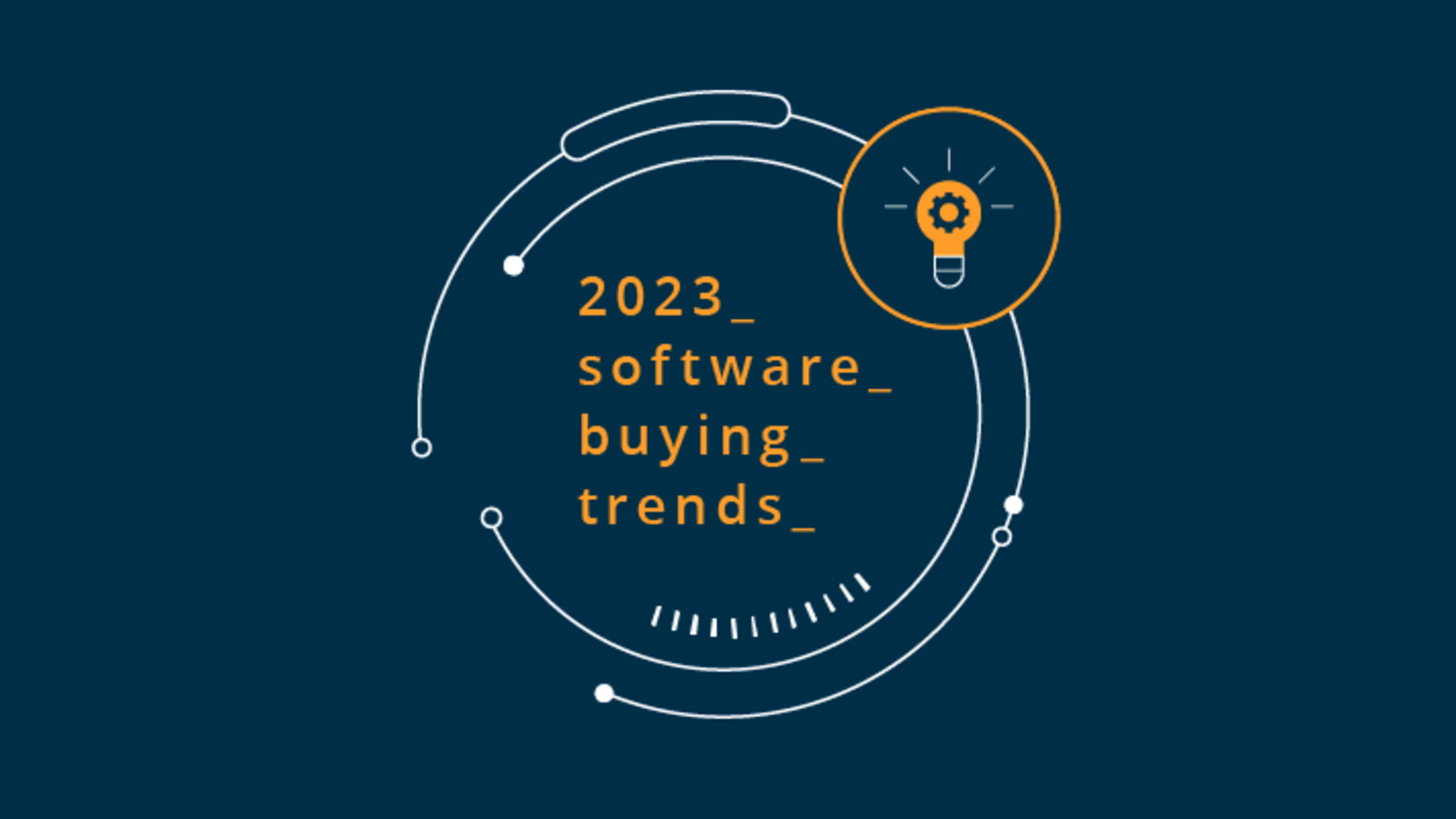Security is top of mind, but how is a potential recession affecting software budgets for small businesses? We have all the answers.
Between ongoing supply chain issues, rapid inflation, rising energy costs, and a highly competitive labor market, small and midsize businesses (SMBs) in the U.S. faced more than their fair share of challenges in 2022. And with a potential recession looming on the horizon, 2023 promises to be more of the same.
It isn’t all bad news, though. Whether it’s a CRM system to maintain a profitable portfolio of clients, procurement software to lower manufacturing costs, or a recruiting platform to find and hire top talent, there’s software out there that can help you overcome what’s ahead.
But maybe you haven’t purchased business software in a while, or perhaps you’re planning on buying software for the very first time. Either way, we’ve got you covered.
With help from Capterra’s 2023 SMB Software Buying Trends Survey*, which collected responses from over 500 employees at U.S. SMBs involved in software purchasing decisions, here are five major trends we think every buyer needs to know about before investing in their next system.
Trend #1: Despite recession fears, software spend is increasing in 2023
What the data says
In a September World Economic Forum survey[1], seven out of 10 economists said they believe a global recession is at least somewhat likely in 2023. Sensing the economic winds shifting, many companies have begun reducing costs in a number of areas—implementing hiring freezes, reducing corporate travel, and even laying off workers in extreme cases.
Software spend, however, isn’t trending downward. In fact, it’s the opposite. When asked how much their organization plans to spend on technology and software in 2023 compared to 2022, a majority of U.S. SMBs (57%) estimate they’ll spend anywhere from 10 to 20% more. And 18% plan to spend even more than that, while only four percent estimate they’ll decrease their software budget in 2023.
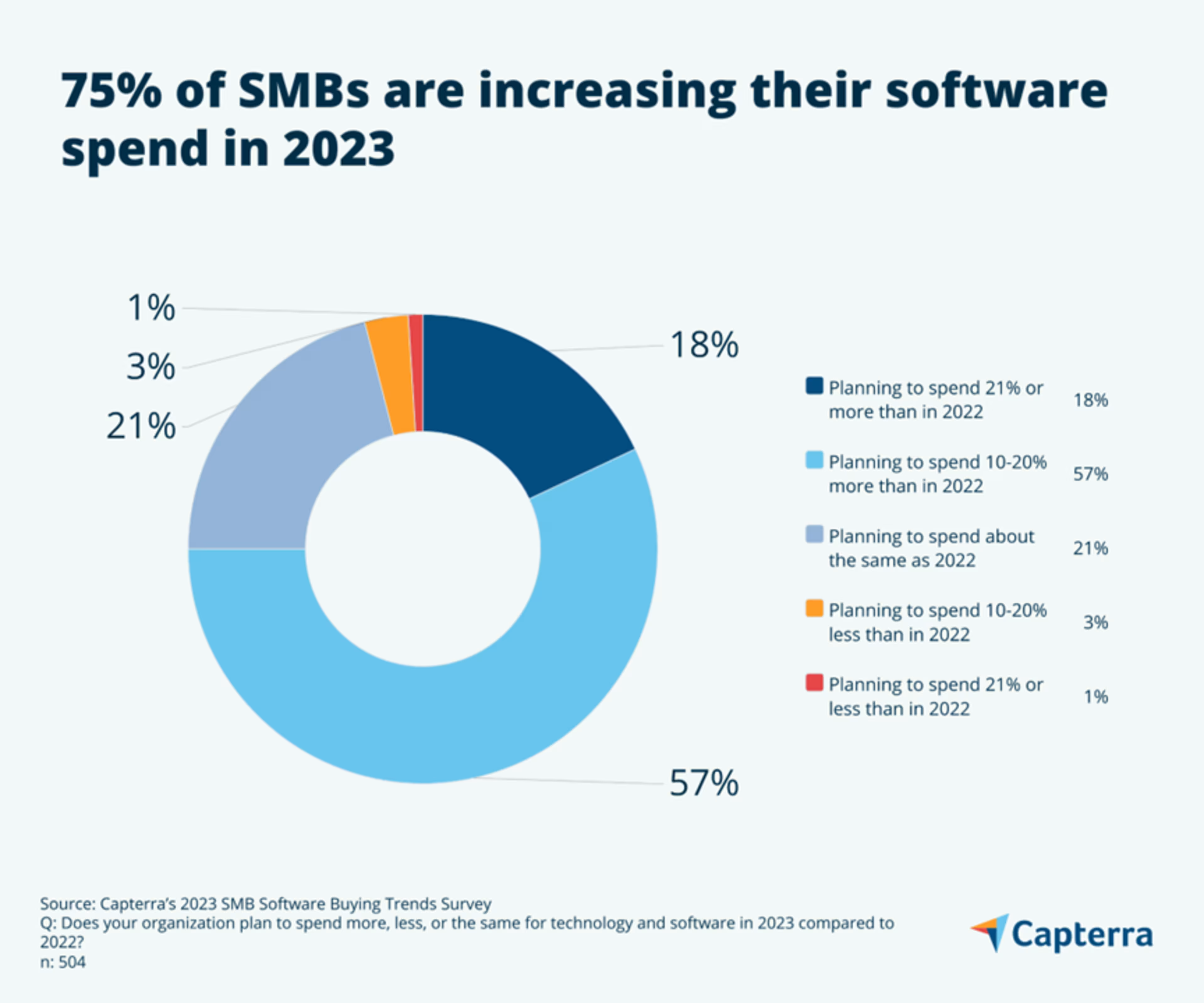
Is some of this increased spend unavoidable? With high inflation pushing prices up on everything from used cars to the latest tech, it’s certainly a factor to keep in mind. But these results also indicate that SMBs don’t see software as frivolous spend that can be easily dropped when times get tough.
On the contrary—these businesses see software as a necessary investment to avoid the worst catastrophes down the line.
What this means for your next software purchase
If your SMB has determined that software is needed in a certain area, now is not the time to close your wallet and put the purchase off for another day. The price tag of the software itself can be daunting, but the savings to be had through automation, more efficient processes, and better data in most cases are worth it long-term.
Still, if you’re looking for ways to save some money on software, we have a guide to understanding all the components of a software purchase here.
Capterra’s 2023 SMB Tech Trends Annual State of Software Adoption Reports capture global trends across industries and reveal how small- and midsize-business leaders are adopting technologies to embrace change, optimize efficiency, and accelerate growth. Our reports are designed to support decision-makers with the insights they need to embrace the right technology and services.
View our 2023 U.S. SMB Tech Trends report to learn how to avoid buyer’s remorse on valuable emerging technology
View our 2023 State of Marketing Software Adoption Report to discover how marketers are leveraging emerging technology
Trend #2: With cyberattacks on the rise, security is a growing concern
What the data says
Data breaches and cyberattacks made headlines around the world in 2022 as the shift to remote work and distributed networks opened up IT vulnerabilities. As a result, while productivity (38%) and growth (34%) have long been the top reasons SMBs have invested in new software, this year a new motive comes in right behind them: concerns about security and cyberattacks (32%).
Our recent, related survey quantified these dangers. In Capterra's 2022 Data Security Survey**, we found that ransomware attacks nearly doubled in the last two years. This study also revealed that younger companies—which also tend to be smaller—are nearly three times as likely to report a ransomware attack as older businesses.
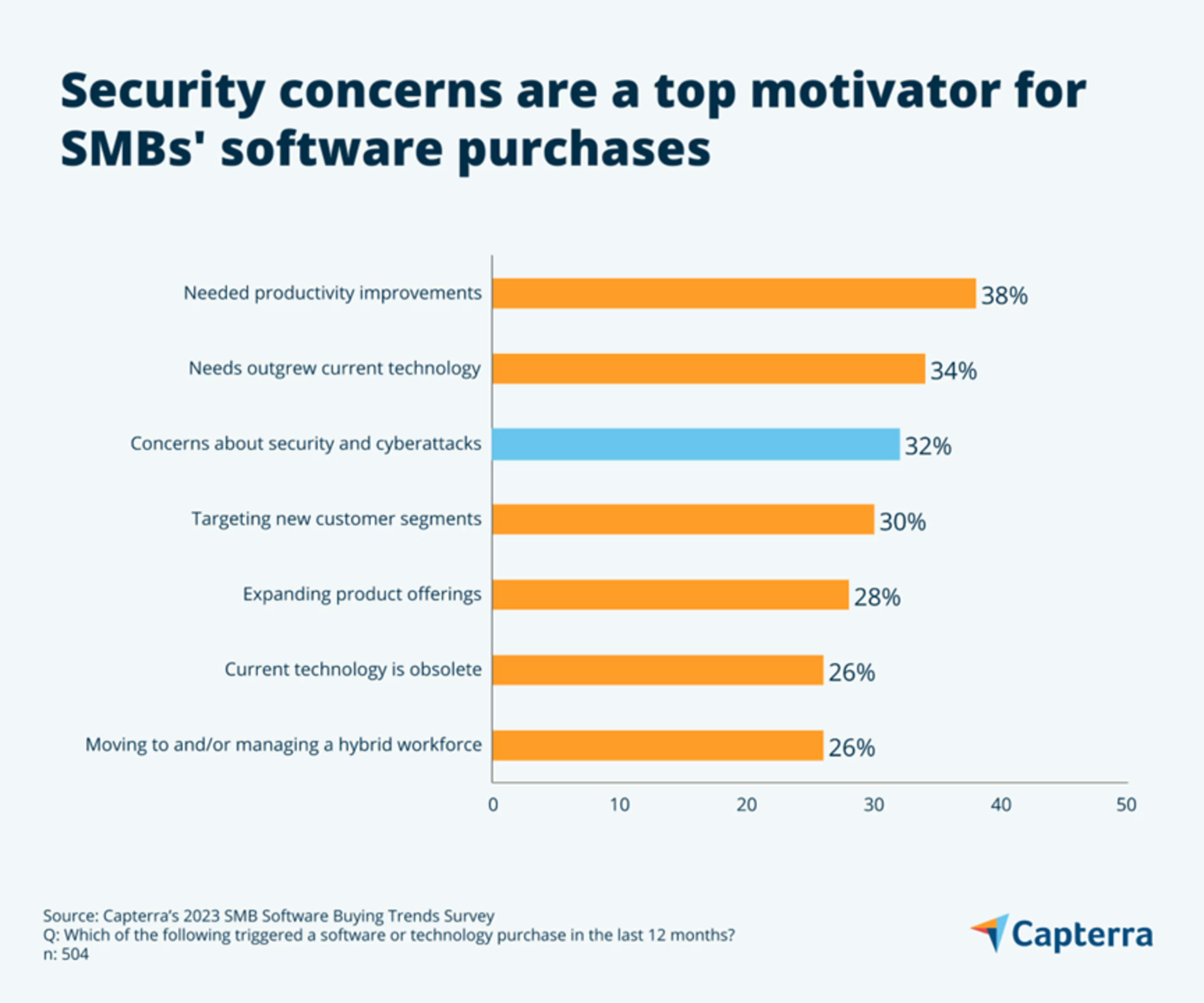
These converging factors are likely why security concerns are significantly influencing business software purchases among SMBs. Not only did 55% of surveyed U.S. SMBs purchase IT architecture and security software in the past 12 months—the most of any software category—but even when SMBs purchased other types of software, security was top of mind.
In fact, security (42%) beat out features (39%) and the ability to integrate (38%) as the most important factor when U.S. buyers are looking for new software.
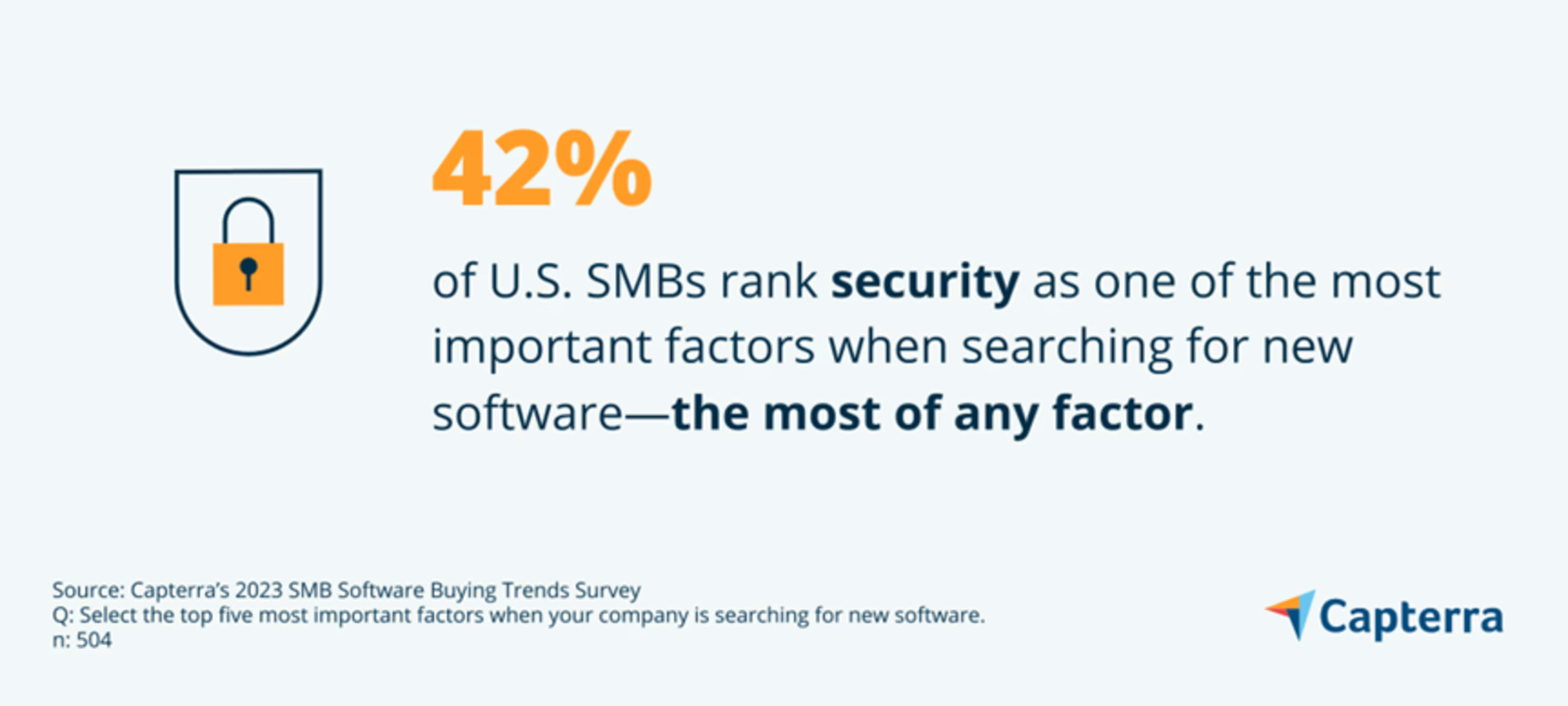
The financial and reputational hit from a single hack can be enough to take down any small business. With cyberattacks on the rise, software buyers need to prioritize security when considering future purchases.
What this means for your next software purchase
When evaluating how secure a software product is, keep these tips in mind:
Be specific: Don’t believe a software vendor just because they say their product is secure. Ask about specific features that can beef up software security, such as two-factor authentication, data encryption, or single sign-on integration. Confirm products have customizable levels of data access to ensure employees can't access more data than they need to do their jobs.
Updates are critical: If a vulnerability in your software is discovered, it needs to be patched quickly. Ask your vendor what their process is for scheduling and pushing out updates, and how updates can be applied when they’re made available to customers.
Pair software with proper training: Even the most secure software platforms can be breached with ease if an employee falls for an email phishing scam. Make security awareness training a regular part of your onboarding process so your workers are aware of basic cybersecurity best practices. We have more tips on what this training should entail here.
Trend #3: Despite urgent needs, implementations are SMBs’ biggest purchase barrier
What the data says
We’ve established that software budgets are growing and security risks present a clear and present danger for SMBs, but fears around software implementation are still holding some back from making the purchases they need. The top reason SMBs don’t invest in software is concerns about downtime or a steep learning curve during implementation (45%). ROI concerns (41%) and internal project team disagreements (36%) closely follow.
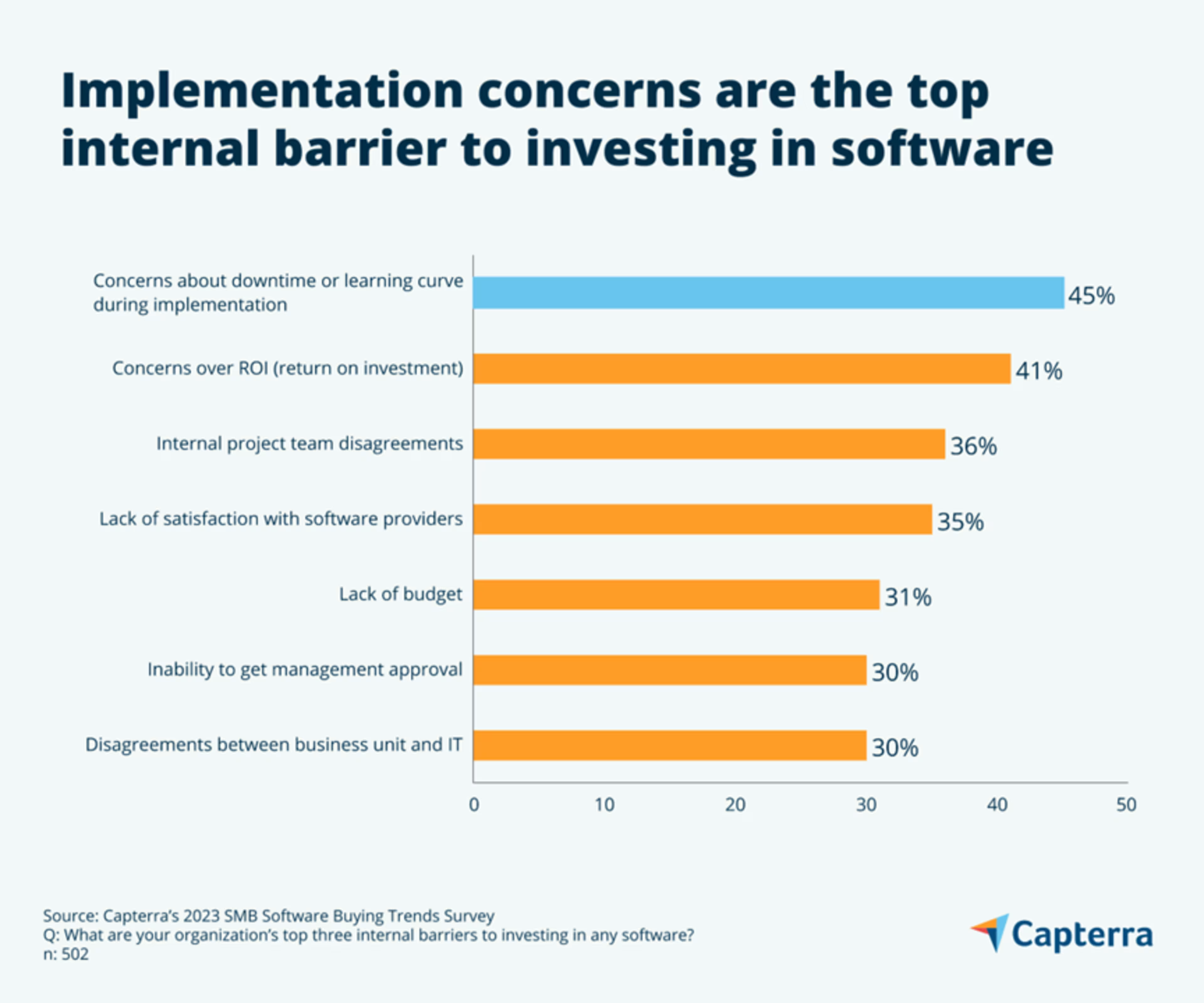
In stark contrast to just two years ago when the COVID-19 pandemic motivated SMBs to rapidly adopt software just to survive, downtime be darned, now these businesses are taking a more cautious approach. Unless a new system can be put in place quickly and employees can learn the ropes of how to use it without a ton of disruption, SMBs aren’t going to sign off on a purchase.
This approach has the potential to backfire. SMBs can miss out on major long-term gains through software because they’re afraid of short-term disruption.
What this means for your next software purchase
A ramp-up period with any new software purchase is unavoidable, but here are a few tips to ensure downtime is kept to a minimum:
Have your data ready to go: If you’re migrating data from one system to another, before the new software is even in place do a thorough audit to check for incomplete or erroneous data. This will save time when getting the new system to a usable place.
Avoid scope creep: It can be tempting to get all of the bells and whistles of your new system in place from the start, but this is a mistake. Come up with a plan to figure out the core functionality you need to implement to keep your business running, then worry about adding other things down the road once you’ve worked out the kinks.
Ask about support options before you purchase: Vendors want you to have a successful implementation and usually have a plethora of resources at their disposal to help. Don’t fail to use every resource you can. Grill vendors extensively about their support and training options, including exactly what types of content they have (an FAQ page, video library, etc.), what kind of implementation support is available, and which types of training are included in the purchase vs. tacked on as an additional cost.
Learn more about three ways you can ace your software implementation here.
Trend #4: Most SMB software purchases are being solely handled by IT, which is problematic
What the data says
Your IT department—even if it’s a department of only one employee—needs to be involved in every software purchase. However, SMBs may be relying too much on IT to determine the best system for their needs.
According to our data, a majority (52%) of U.S. SMBs rely on a formal team of solely internal IT professionals to handle the evaluation, selection, and purchase of new software. Less than one in four (22%) involve people from various departments outside IT.
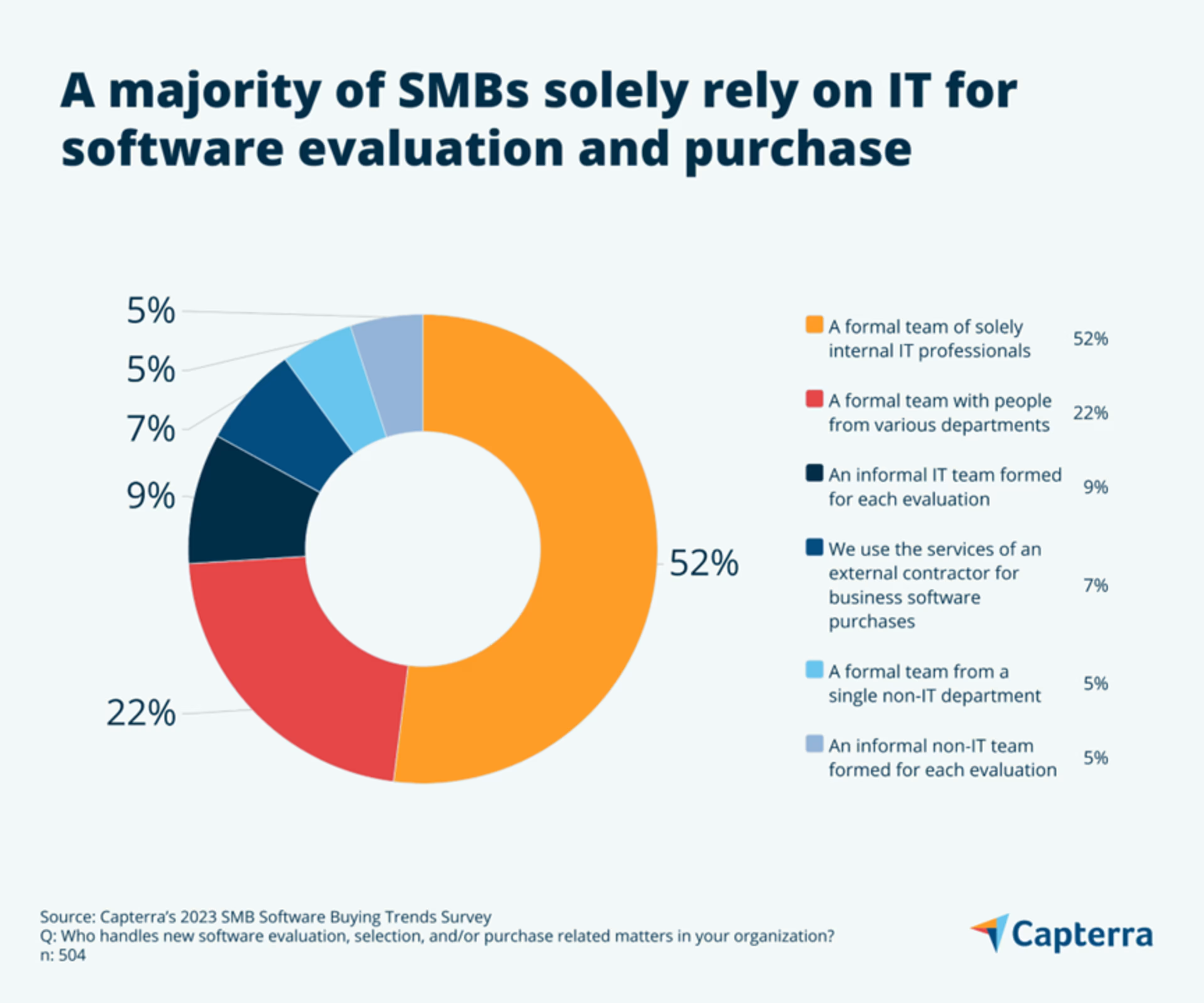
For tech that is only going to be used by IT, such as back-end development software, this solo IT approach makes sense. But for most kinds of software, this trend is worrisome. While IT departments are perfectly suited to evaluate the nuts and bolts of software compatibility and integration, the exclusion of other important stakeholders in software evaluation could mean that SMBs aren’t keeping important factors like ease of use top of mind.
What this means for your next software purchase
While it’s true that too many cooks in the kitchen can result in a bad software purchase, the opposite is also true. Whether it’s an internal, employee-facing system or an external, customer-facing system, having end users involved in the selection process makes it more likely you'll find products that will actually be used as intended.
You can involve end users or gather their input at a few stages in the process. When determining your requirements for a new system, a simple survey sent to customers or employees that will use the software asking about their need-to-haves, nice-to-haves, and deal-breakers can give you the information you need. You can also involve users in the software demo process so they have some hands-on time with the system to give feedback (check out our guide to getting the most of software demos here).
Trend #5: Customer reviews sway purchase decisions (and verified reviews are critical)
What the data says
In today’s world, it's broadly accepted that customer reviews are crucial information to consider before making any kind of purchase. When it comes to high-stakes software purchases, this holds true. More than half of SMBs (52%) say user reviews have a significant influence in their software evaluations.
Just how important are reviews? We found that customer reviews are the most sought-after content for SMB software buyers looking to inform a purchase decision.
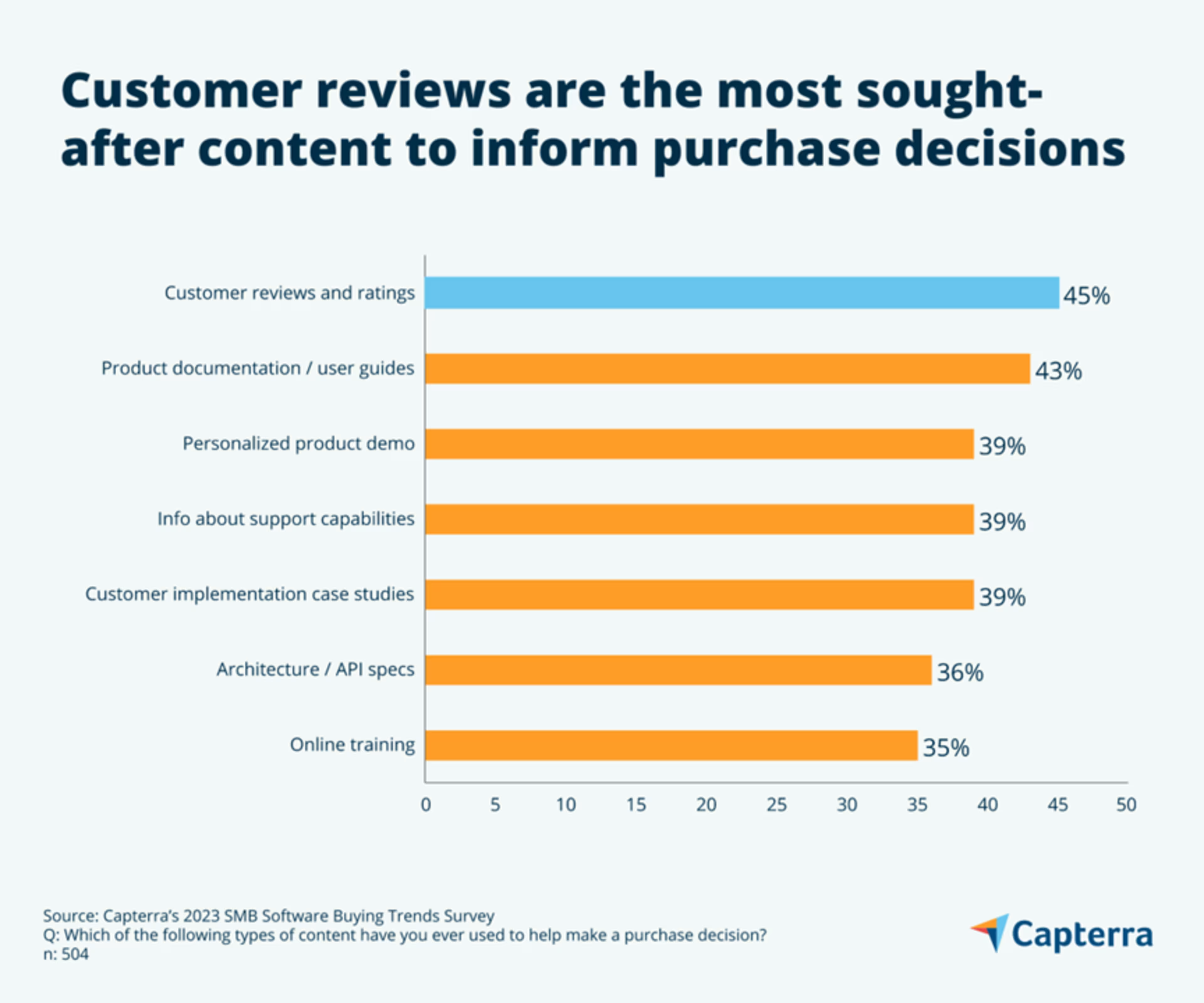
Looking closer, we see that not all reviews are created equal. Having verified, trustworthy reviews is important to virtually all SMBs. In fact, 89% of SMBs say verified reviews are either important or very important when comparing software systems.
Within the reviews themselves, a number of factors rise to the top for purchase considerations. Qualitative commentary takes the top spot (55%), suggesting that buyers want a full picture of what users like and dislike about a tool. The overall distribution of ratings (i.e., the ratio of positive reviews to negative reviews) comes in second at 48%, and the ability to see common review themes as well as the existence of recent reviews share third place (both at 39%).
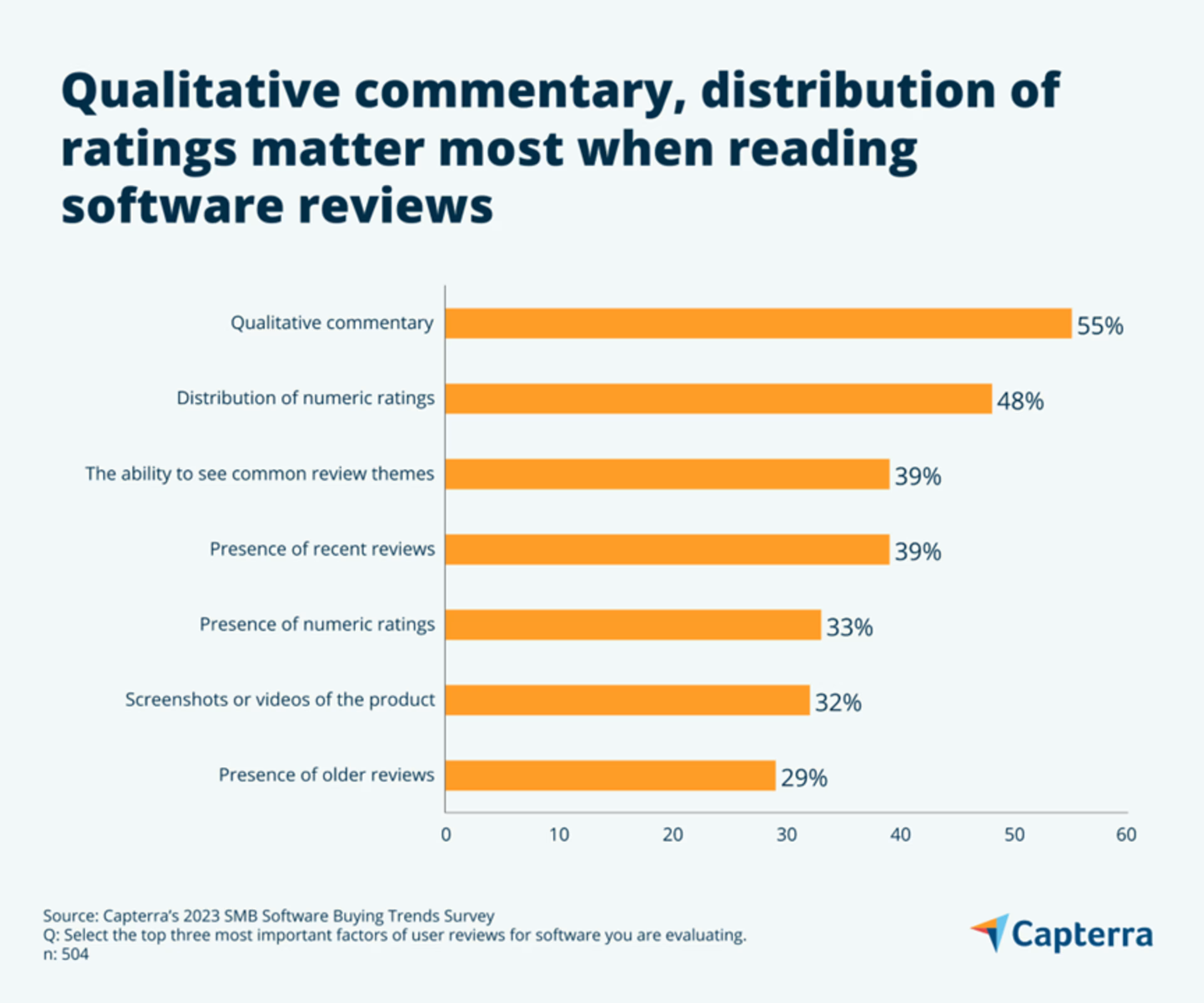
What this means for your next software purchase
With more than 1.5 million reviews across 50,000+ software systems, Capterra is designed to give SMBs the info they need to evaluate and compare software options. Not only is each review verified as a real user, but they’re also detailed. For any given product, you can sort and filter reviews by size of business, length of use, and even the reviewer’s role to find reviews from organizations exactly like yours. You can then read up on everything they have to say about the software, including pros and cons, and any alternatives they considered.
For more help with how to best use Capterra in your software search, check out our four tips for using software reviews to find the right product.
A few final quick findings
If you’re buying software in 2023, these five trends offer great insight into what you should prioritize to make an informed purchase decision. We’re not done, though. To give buyers even more data to benchmark their software purchase process against their peers, here are some final quick findings from our survey:
SMBs most often consider four to six vendors before a final purchase decision is reached.
SMBs most often take three to six months to evaluate, select, and finalize a new software purchase.
SMBs most often drop a software product from consideration if prices are not in line with expectations.
Most often, SMB software budgets are decided after or while evaluating different software providers (not before).
